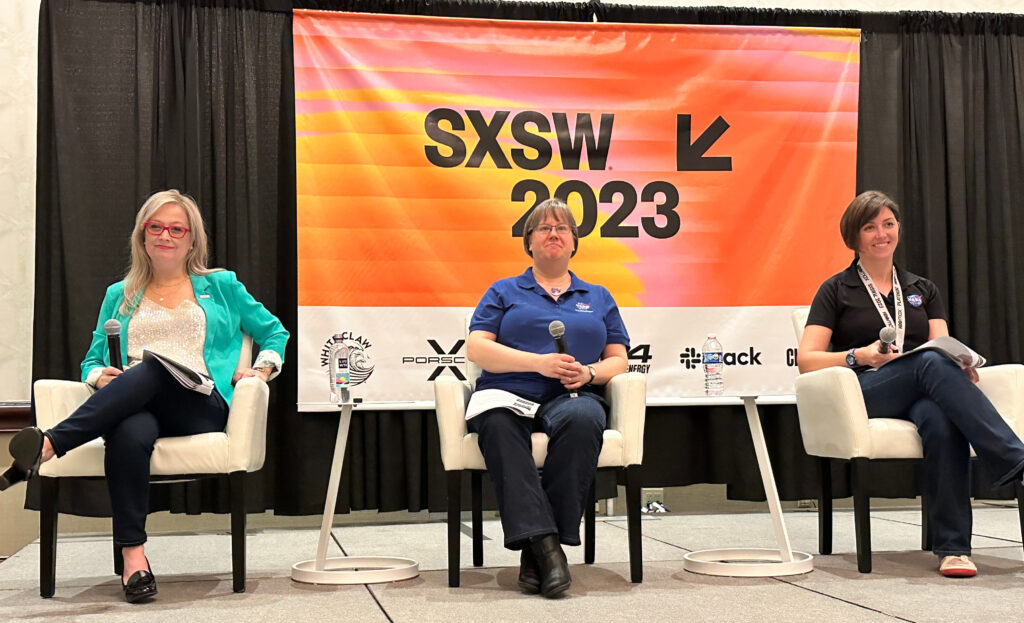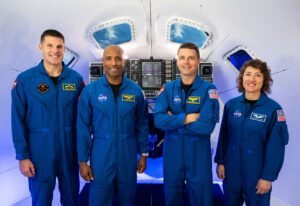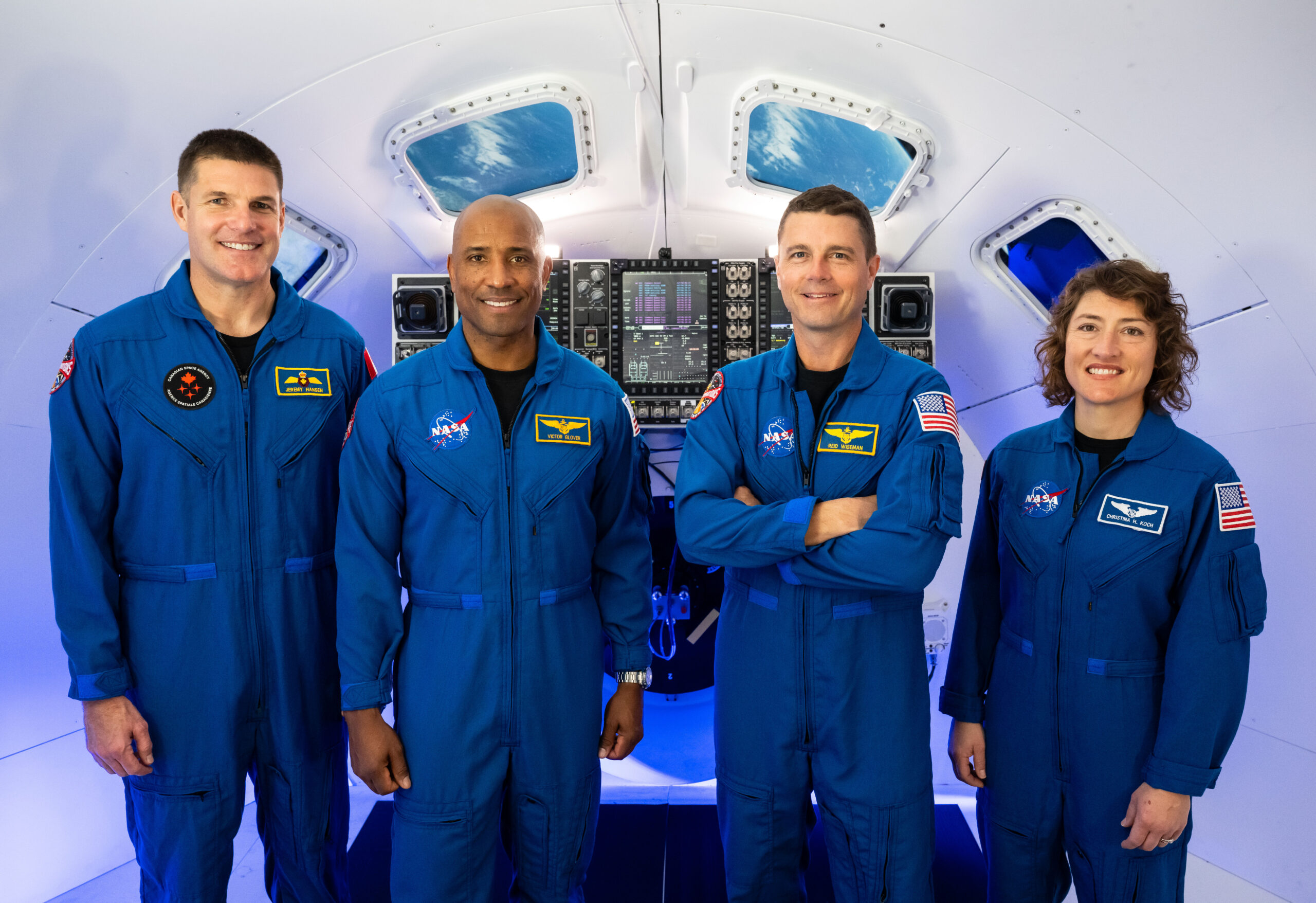The first crew for the Artemis mission to the Moon was announced just a few weeks after a session at SXSW on NASA’s plans to send people to the Moon and then Mars. The astronauts, pictured here, are slated to blast off for a swing around the Moon in late 2024 or early 2025.
Even though it will be nearly a repeat of the Apollo 8 mission to the Moon in 1968, this heralds the long-awaited return to real exploration. Orbiting Earth a couple hundred miles up may have some scientific value, but it can hardly be described as real space exploration. For that, one has to leave Earth orbit. And the only place to go, for now, is our Moon, about a quarter million miles away.
Present at SXSW were four scientists comprising an all-female panel, a far cry from the Apollo days when virtually every scientist and engineer was male. On hand were Lindsay Aitchison, Spacewalk & Human Surface Mobility Program exec; Sarah Noble, Lead for Lunar Science; Michelle Rucker, Mars Architecture Team Lead; and Niki Werkheiser, Director for Technology Maturation at NASA Headquarters.
Rucker talked about the sort of talent NASA is looking for to plan its ambitious trip to the planet Mars in the 2030s. “Every centimeter of movement has to be planned: you have to understand how bodies move in space. So dancers – there’s a place for you to help us. Artists, painters, sculptors! Let me tell you, you don’t want engineers picking the colour scheme for the thing you’re going to be locked into for a couple of years. We need people who know how to do that without causing psychic episodes. The crew system design, not just the colour palette, crew interfaces (the joysticks, handles, even bathroom design). That is really important for us. Musicians! My music friends tell me that music is math, it’s about timing. A mission is about timing: if you miss your timing you might shoot off into space somewhere and never come back. That’s the skill we need: people who understand timing. Chefs! You don’t want to be eating stuff out of a tube for a couple of years. Food preparation and being able to prepare foods that have a good shelf life. My point is there are a lot of skills that go into planning a space mission.”
The panel led the audience through a checklist of things that are crucial to a space mission. “Your spacesuit is really your own personal spacecraft,” explained Aitchison. “Everything you have inside of the space station to keep you alive, you have in your spacesuit as well. It has to fit your body well so that you can fully function. It’s really an athletic endeavour to do a spacewalk, so you have to practice and we have different ways to mimic the space environment. One of those places is called ARGOS, where we mimic the gravity of either the Moon or Mars. You can get a feel for how your spacesuit is going to move, how you find your balance in the suit, and does it really fit you well. So each time you go through one of these practice runs, we are going to tweak the spacesuit so that by the time you get your actual mission you know how it’s going to respond.”
On the science front, Noble related her team has “been working with astronauts for a couple of decades now, so that when they get their basic training as astronauts for two years part of that is an introduction to geology. In the past 10 years we’ve taken them outside into the field to do science as an assistant. That gives them a real feel for what a geologist actually does. Now we’re getting serious: we will do a range of classroom training to teach them all they need about geology, but also the specific geology of the Moon so they’re ready to go when they hit the ground.”
Werkheiser emphasized that “technology drives exploration. I work mostly at a level which is affectionately known as The Valley of Death. This is where you take technologies that were R&D and try to find the foundation of it to turn it into a true prototype. We have a Lunar Surface Innovation Initiative (LSII) which has six broad capability areas that we need developed for the lunar surface for both our robotic missions and the astronauts. One deals with using natural resources, using what’s there, to do what we need to do. From Moon dirt (regolith, which is glass-like particles) we can actually extract different resources including oxygen, water, and even propellants. We can use that same regolith to 3D print landing pads and possibly habitats. In order to do any of these you have to have power. The way we often mitigate risk is to try a bunch of different processes. So, we have everything from surface power to wireless power beaming to solar array technology. And also, energy storage in fuel cells.”
The plan for Artemis is to establish a space station called Gateway. Astronauts will voyage there first to board the lunar lander. It will also be the jumping-off point for a mission to Mars. Gateway will orbit the Moon, but only get close to it every 6 days, so that is when astronauts will enter or leave Gateway from the lunar surface. Rucker explained that “Gateway will let us practice Mars operations closer to home,” while the Mars spacecraft is being assembled in space one piece at a time, like the space station now orbiting Earth was constructed.
The first Artemis mission with people aboard will be Artemis 2; it will be followed by the lunar landing crew on Artemis 3. Noble said they “will land near the South pole which is very far away from anywhere we went during Apollo. We have 13 places as potential landing sites. We need a place that is flat, easy to land on and with lots of sunlight. We have asked our science community over the last 6 months to think of which of these places is better.”
Noble held out the prospect of some very important issues involving water. “In general, the South pole has some of the earliest rocks on the Moon, the ancient crust of the Moon, so that is very exciting for us. In the permanently shadowed craters we think that volatiles and water exist. It’s great for resources but it’s also really great for science: they will tell us a lot about how water is moving around the solar system. Where did that water come from? How is it evolving over time?”
All these things will become real just 2 years from now. If the missions go as planned, humans will once again be on the Moon!
Photo: The Artemis II crew in an Orion simulator at NASA’s Johnson Space Center in Houston.
NASA/James Blair
SXSW photo: (l ro r) : Werkheiser, Noble, Aitchison

Location: Bldg 5, Orion Mockup
Subject: Artemis II Crew Announcement products and still images of crew in Building 5s Orion Simulator.
Photographer: James Blair
